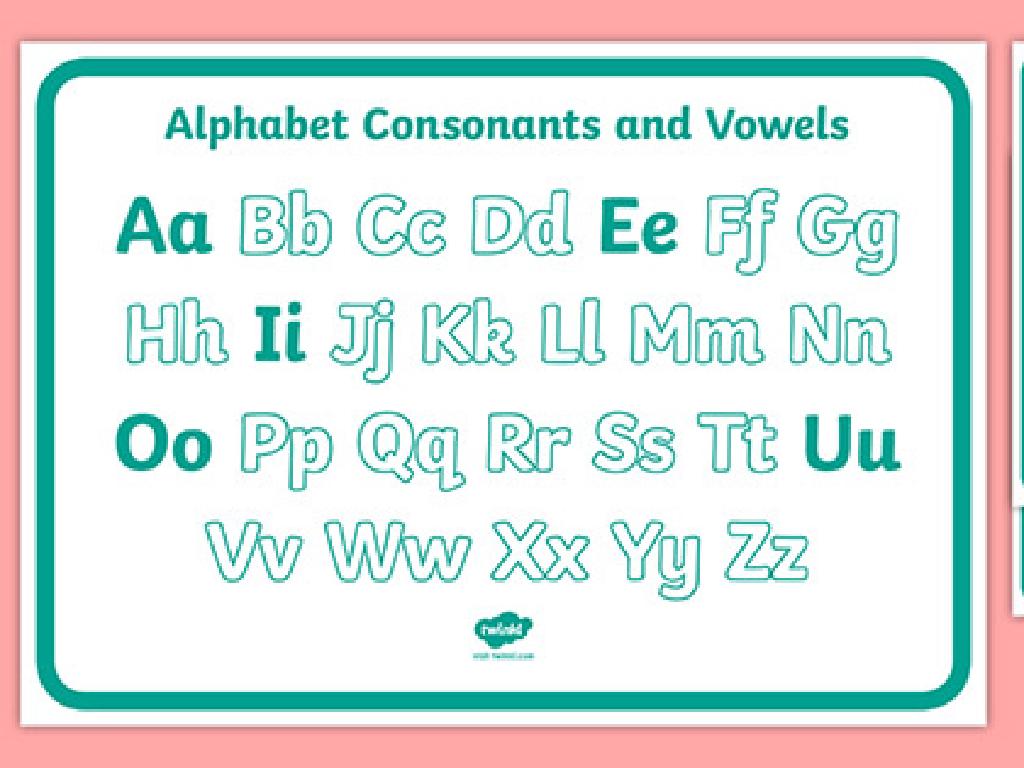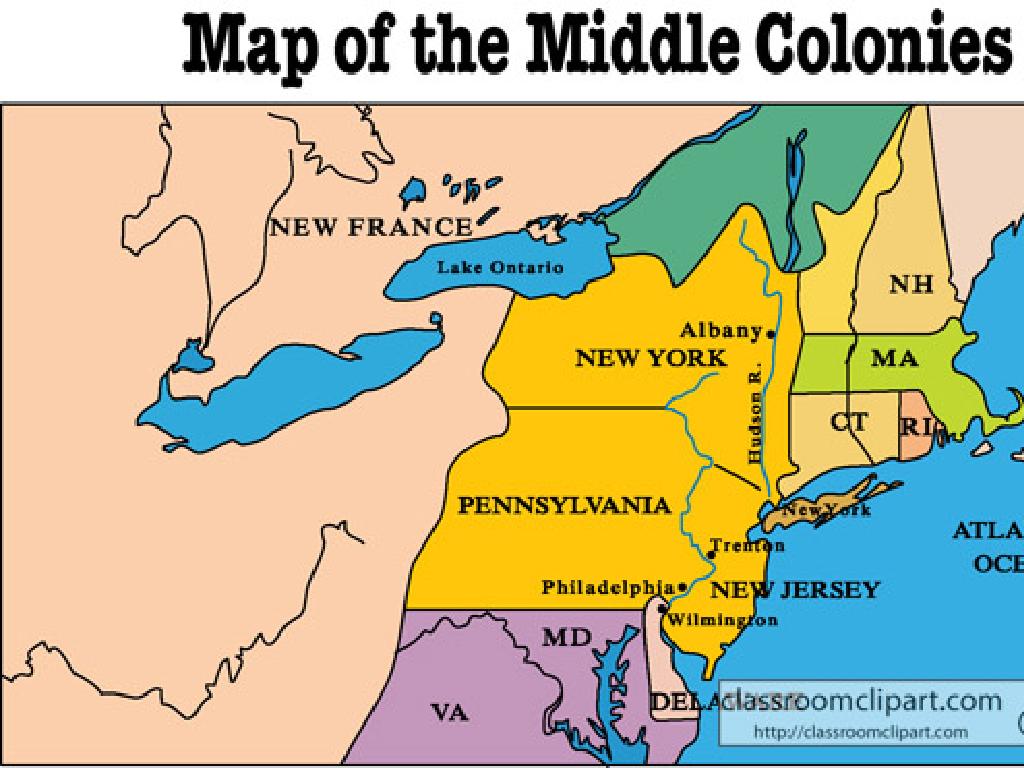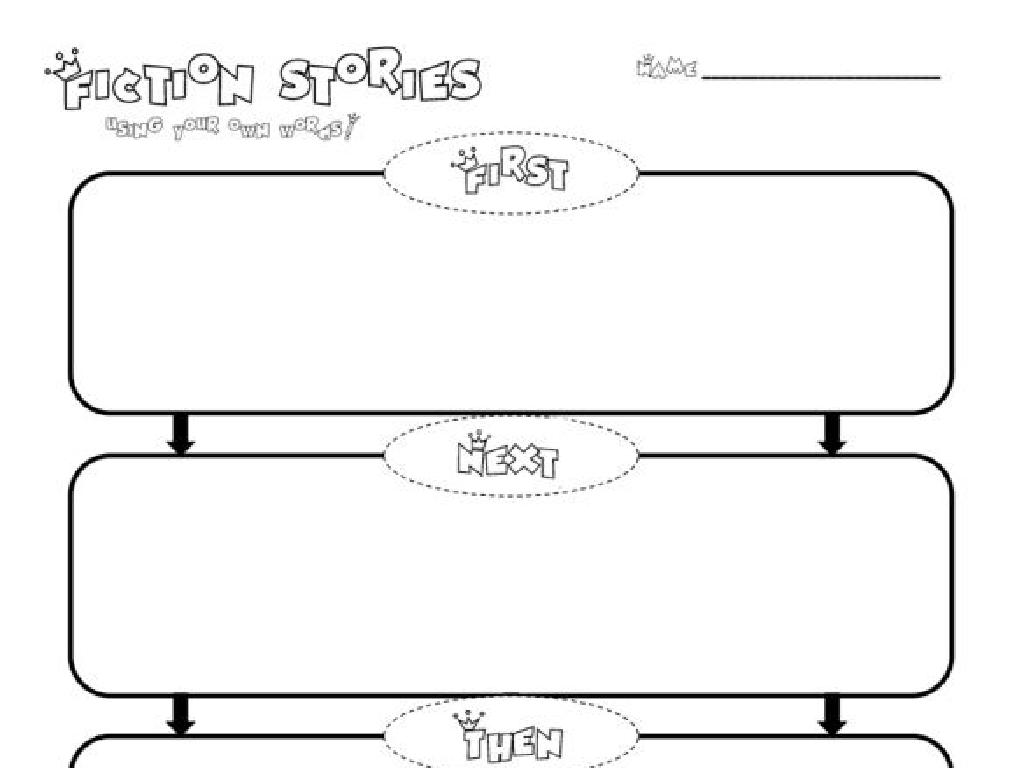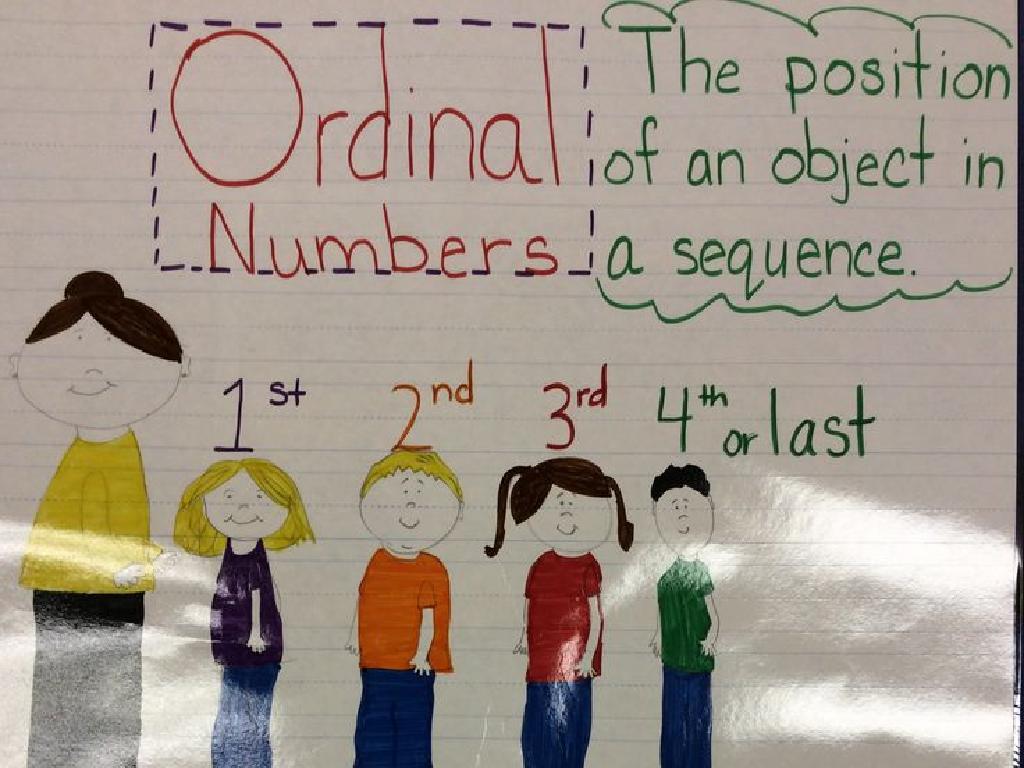Identify The Purpose Of A Text
Subject: Language arts
Grade: Fourth grade
Topic: Author'S Purpose
Please LOG IN to download the presentation. Access is available to registered users only.
View More Content
Understanding the Author’s Purpose
– Why do authors write stories?
– PIE: Persuade, Inform, Entertain
– Authors may want to convince you, give you facts, or just make you laugh.
– Examples of each purpose
– Persuade: Ads or speeches, Inform: Textbooks or articles, Entertain: Novels or comics
– Discovering the purpose in our reading
– Use clues from the text to determine why the author wrote it
|
Begin the lesson by engaging students with the question of why authors write stories. Introduce the acronym PIE to help them remember the three main purposes: Persuade, Inform, and Entertain. Provide clear examples for each, such as advertisements for persuasion, textbooks for information, and novels for entertainment. Encourage students to think of their own examples. Then, guide them on how to look for clues in texts they read to identify the author’s purpose. This will help them become more thoughtful readers who can appreciate the intent behind different texts.
Understanding Author’s Purpose
– Why do authors write?
– The PIE of author’s purpose
– Persuade: to convince, Inform: to teach, Entertain: to amuse
– Examples of Persuade, Inform, Entertain
– Ads persuade, textbooks inform, stories entertain
– Identifying the purpose in texts
– Use clues in the text to determine the author’s goal
|
In this slide, we introduce the concept of author’s purpose to the students. Authors write for various reasons, but the three main purposes are to Persuade, Inform, and Entertain, which can be remembered as PIE. Provide students with clear examples: advertisements are meant to persuade the reader to buy something, textbooks are written to inform or teach about a subject, and stories are usually written to entertain. Encourage students to look for specific clues in the text that hint at the author’s intention. For instance, persuasive texts may use strong adjectives and calls to action, informative texts will present facts and explanations, and entertaining texts will have engaging narratives or characters. This understanding will help students to better engage with and comprehend the texts they read.
Understanding Author’s Purpose: Persuade
– What does ‘persuade’ mean?
– To persuade is to convince someone
– Authors persuade to influence
– They want you to do or believe something
– Examples: ads, speeches, articles
– Think commercials, campaign speeches, or editorials
– Class Activity: Persuasion in action
– Recall a moment you convinced someone
|
This slide introduces the concept of persuasion as one of the author’s purposes in writing. Persuasion means to convince the reader to think or act in a certain way. Provide examples such as advertisements that try to get us to buy something, speeches that aim to sway our opinions, or opinion articles that advocate for a particular viewpoint. For the activity, ask students to think of a time when they tried to persuade a friend or family member, and what words or reasons they used to convince them. This will help them relate to the concept of persuasion and understand how it is used in writing. The teacher should be prepared to guide the discussion, helping students to articulate their experiences and understand how persuasion plays a role in everyday communication.
Understanding Author’s Purpose: To Inform
– Authors inform to teach us
– Examples: Textbooks, recipes
– Like how to solve math problems or bake a cake
– News articles inform the public
– They provide updates on what’s happening around the world
– Class Activity: Sharing Facts
– Think of a cool fact you’ve learned and be ready to share it!
|
This slide introduces the concept that authors often write to inform or teach their readers. Use examples like textbooks for learning subjects, recipes for cooking, and news articles for staying updated on current events. For the class activity, encourage students to think of a fact they’ve learned recently, which could be from any subject or even something interesting from a book or article they’ve read. Prepare to facilitate a discussion where each student can share their fact and discuss how the author’s purpose was to inform. This will help students recognize the intent to inform in various texts they encounter.
Author’s Purpose: To Entertain
– Authors write to entertain
– Enjoyment through stories
– Think of stories that make you laugh or feel excited
– Examples: novels, comics, poems
– Harry Potter, Garfield, or Dr. Seuss books
– Class Activity: Discuss favorite stories
– Share what makes a story fun and why you love it
|
This slide aims to help students understand that one of the author’s purposes in writing is to entertain the reader. Use examples of popular novels, comics, and poems that are age-appropriate for fourth graders, such as ‘Harry Potter’, ‘Garfield’, or ‘Dr. Seuss’ books. For the class activity, encourage students to think about their favorite story and discuss in small groups or with the class what makes it entertaining. Ask them to describe the elements of the story that amuse them, such as funny characters, exciting plots, or interesting settings. This will help them to identify and appreciate the entertainment value in literature. Provide guidance on how to respect each other’s preferences and opinions during the discussion.
Identifying the Author’s Purpose
– How to determine author’s intent
– Authors write with different goals in mind, like to inform, entertain, or persuade.
– Clues in text: words, feelings, format
– Words can show intent; feelings can hint at purpose; format guides the structure.
– Practice finding the purpose
– We’ll do activities to recognize why an author wrote a text.
|
This slide introduces the concept of author’s purpose to the students. Begin by explaining that authors write texts with specific intentions: to inform, entertain, persuade, or express themselves. Teach students to look for clues in the text that reveal these intentions. For example, persuasive language indicates a purpose to persuade, while descriptive imagery might be used to entertain. Discuss how the text’s format, such as a poem, article, or story, can also provide hints. Engage the class with practice activities where they read short texts and identify the author’s purpose, discussing the clues that led them to their conclusions. This will help students become more critical readers and understand the various reasons behind writing.
Class Activity: Purpose Detectives
– Read short texts as a class
– Discuss the author’s purpose
– Is the author informing, persuading, entertaining, or explaining?
– Become detectives of purpose
– Use context and text evidence as clues
– Find clues to solve the mystery
– Share your ‘case findings’ with the class
|
This activity is designed to engage students in understanding the author’s purpose in a fun and interactive way. Begin by reading several short texts aloud to the class. After each text, facilitate a discussion on what the author’s intent might be, guiding students to consider whether the text is meant to inform, persuade, entertain, or explain. Encourage students to think like detectives, looking for context clues and evidence within the text that reveal the author’s purpose. As they identify clues, have them share their thoughts with the class. This will not only help them understand the concept of author’s purpose but also develop critical thinking and analytical skills. Possible activities include identifying purpose in advertisements, recipes, or instructions, and explaining their reasoning.
Group Activity: Crafting Purposeful Paragraphs
– Write a paragraph in groups
– Choose a purpose: Persuade, Inform, or Entertain
– Persuade: Convince others, Inform: Provide facts, Entertain: Tell a story
– Share with the class
– Guess the paragraph’s purpose
– We’ll try to identify each group’s chosen purpose
|
This activity is designed to help students practice identifying the author’s purpose in writing. Divide the class into small groups and assign them to write a short paragraph with a clear intent to either persuade, inform, or entertain their classmates. Once the groups have written their paragraphs, they will take turns reading them aloud to the class. The rest of the class will then guess the purpose of each paragraph. This interactive exercise not only reinforces the concept of author’s purpose but also encourages teamwork and critical thinking. Possible variations of the activity could include writing advertisements, news reports, or short stories. Provide guidance and examples for each purpose before they begin the activity.
Detective Work: Uncovering the Author’s Purpose
– Congrats on your detective skills!
– Homework: Find a text at home
– Could be a book, magazine, or even a flyer
– Determine the author’s purpose
– Is it to inform, persuade, entertain, or explain?
– Share your discovery tomorrow
|
Today’s class focused on identifying the author’s purpose in various texts. As a conclusion and homework assignment, students are tasked to apply what they’ve learned by finding a piece of text at home. This could be anything from a storybook to an advertisement. They should write down what they believe the author’s purpose is, using the PIE (Persuade, Inform, Entertain) method as a guide. Tomorrow, students will have the opportunity to share their findings and discuss how they came to their conclusions. This exercise will help reinforce their understanding and allow them to demonstrate their analytical skills. Provide examples of questions they might ask themselves to determine the purpose, such as ‘What is the text telling me?’, ‘Is the author trying to convince me of something?’, or ‘Did the text make me laugh or feel entertained?’





